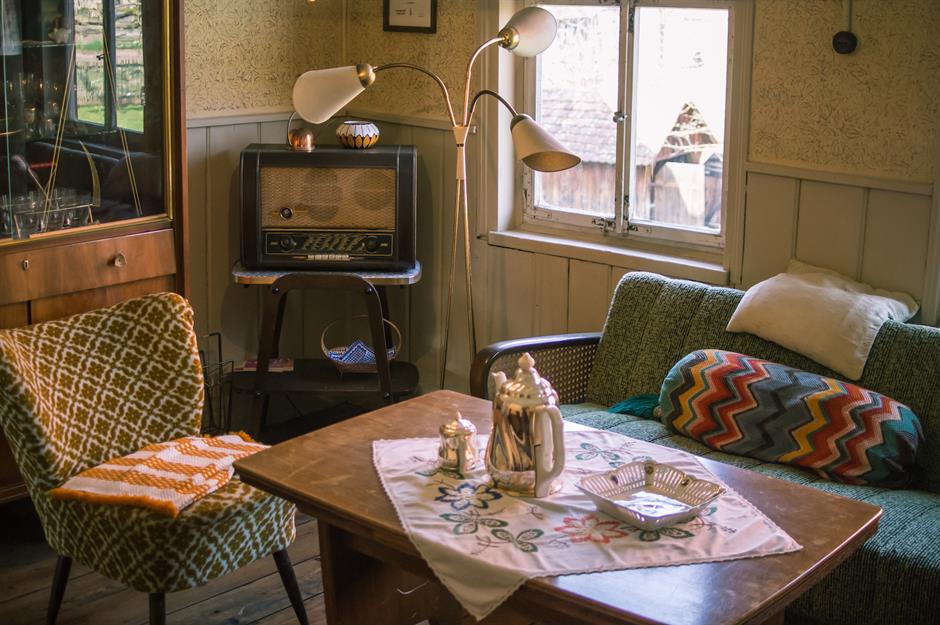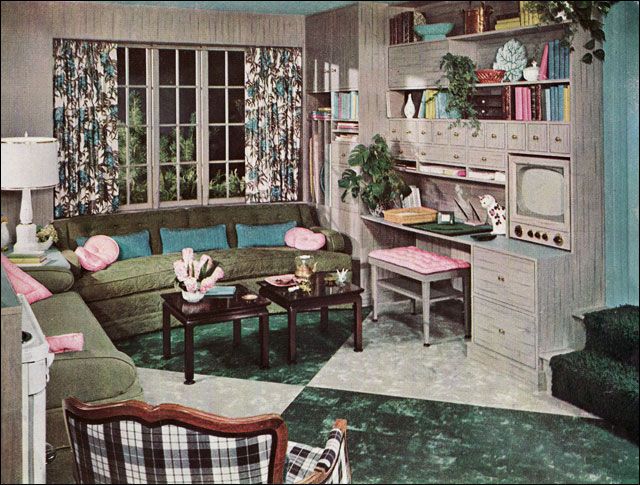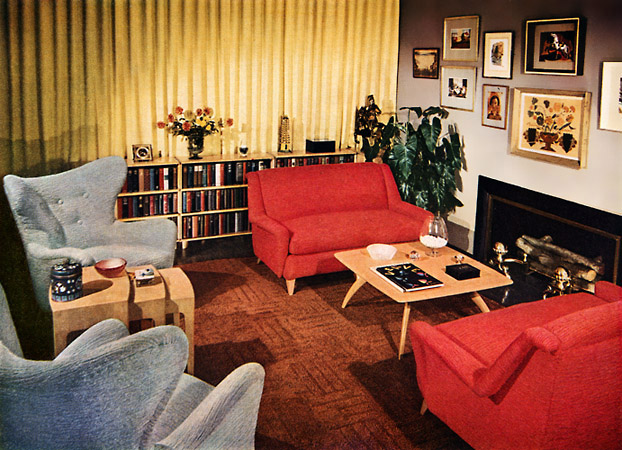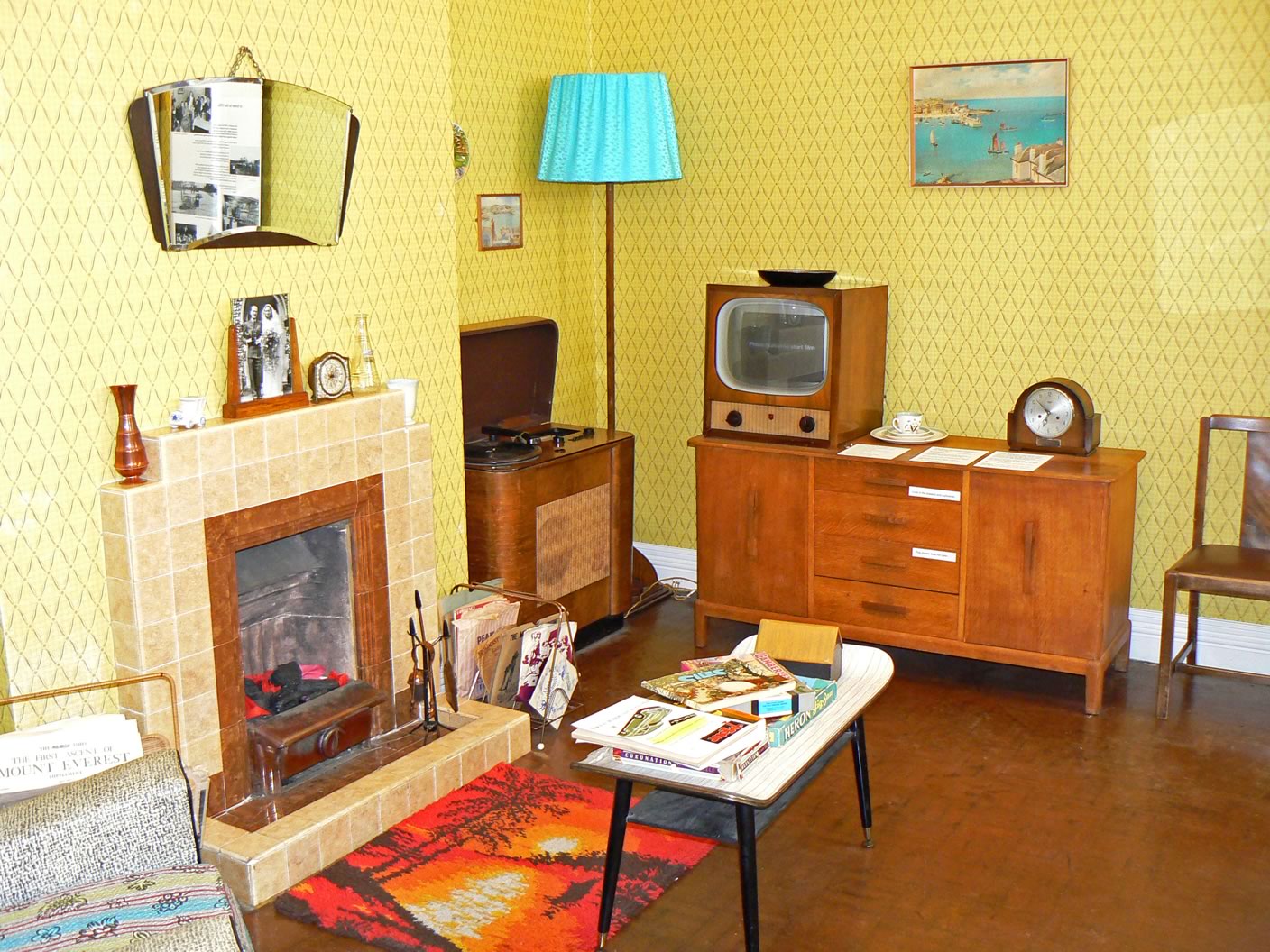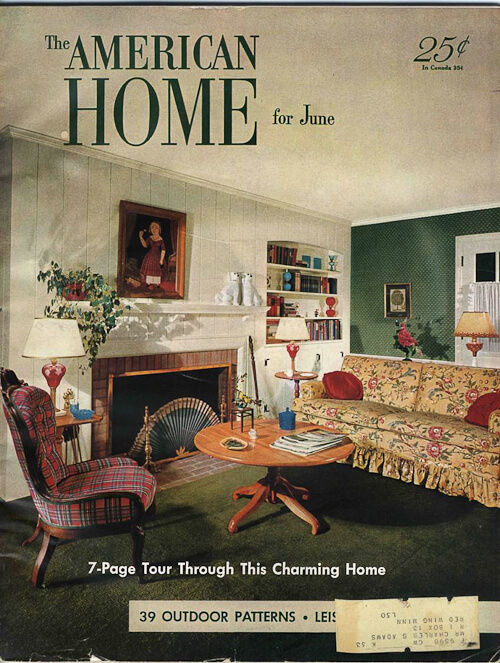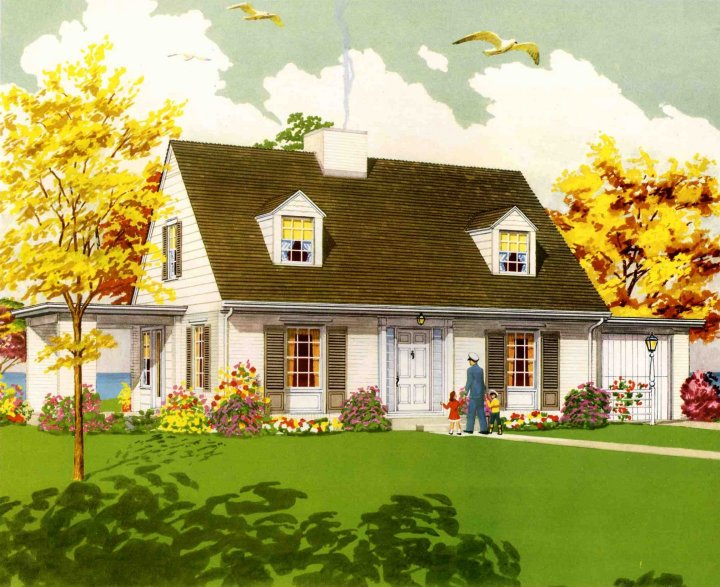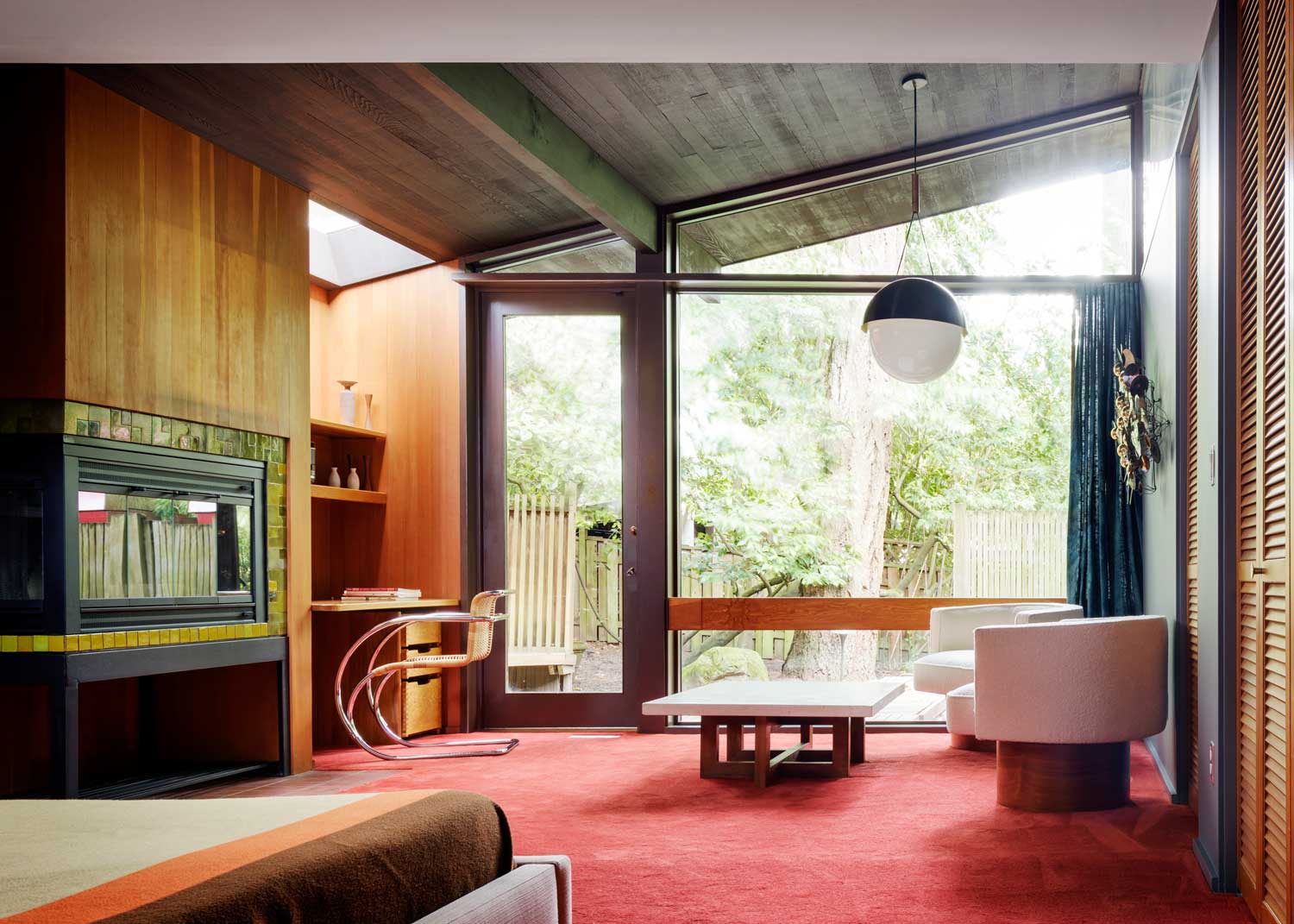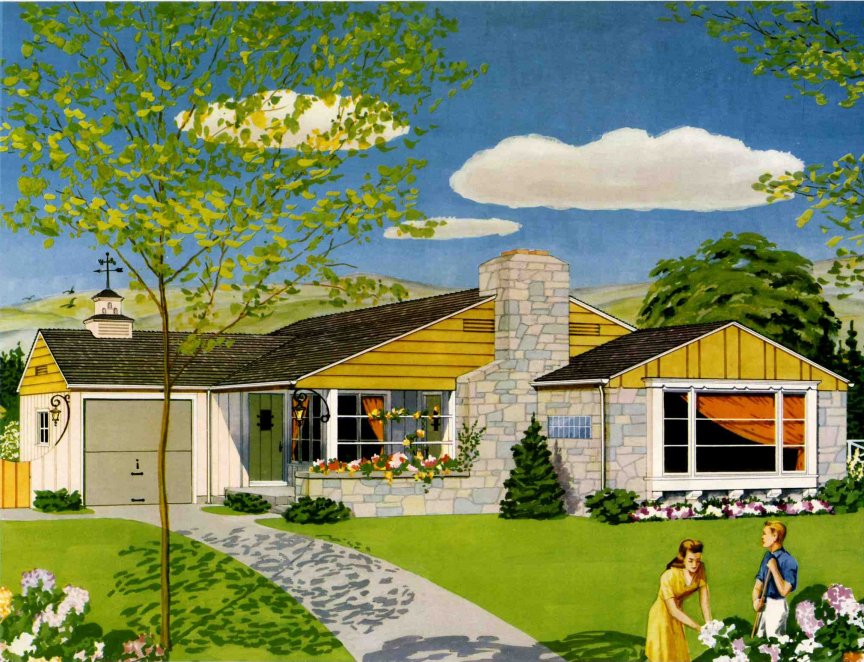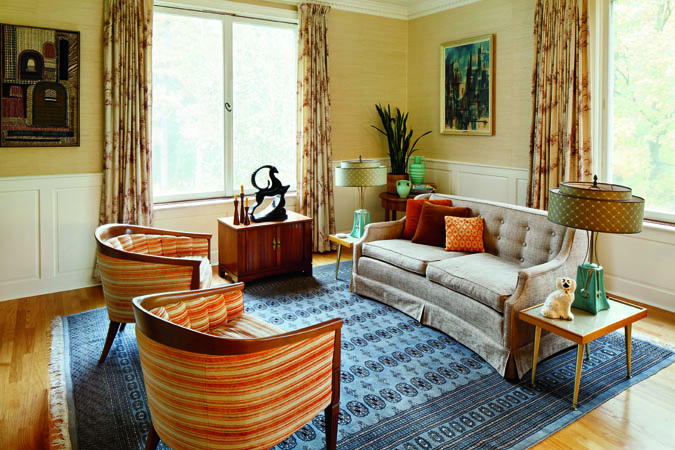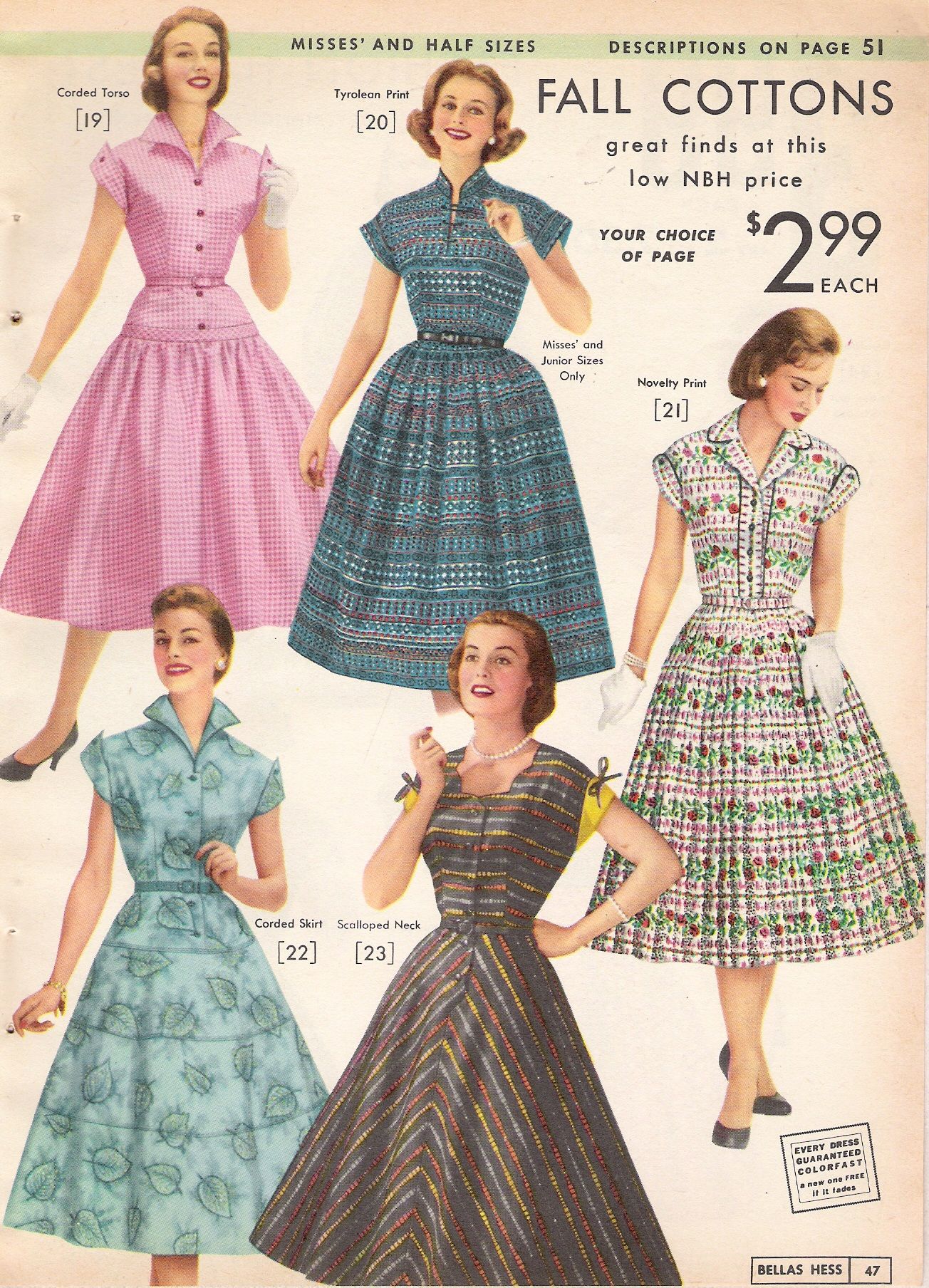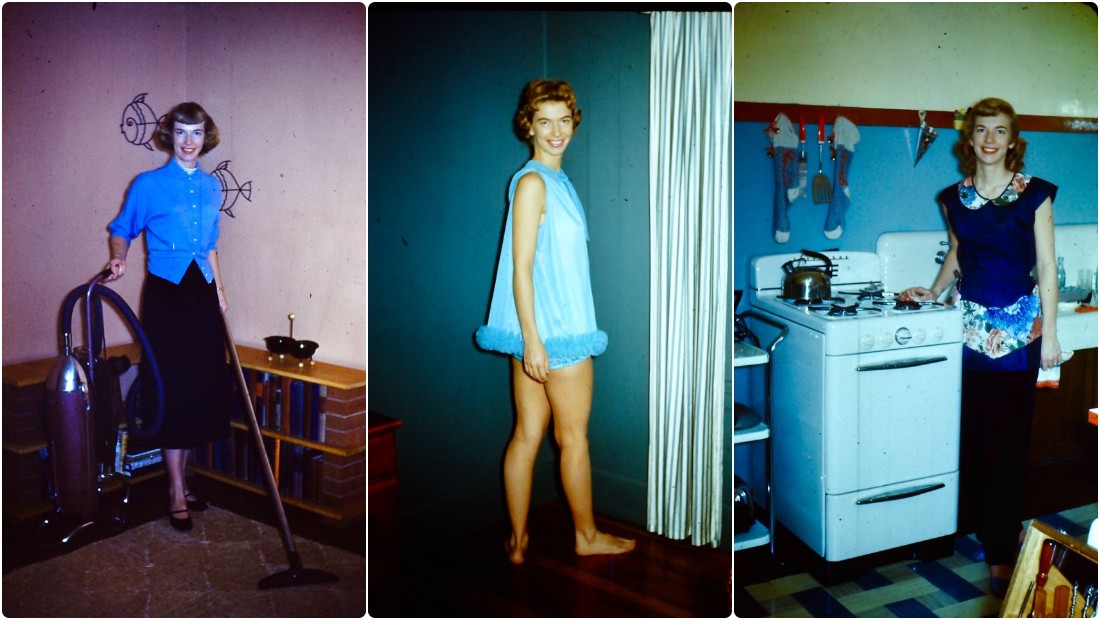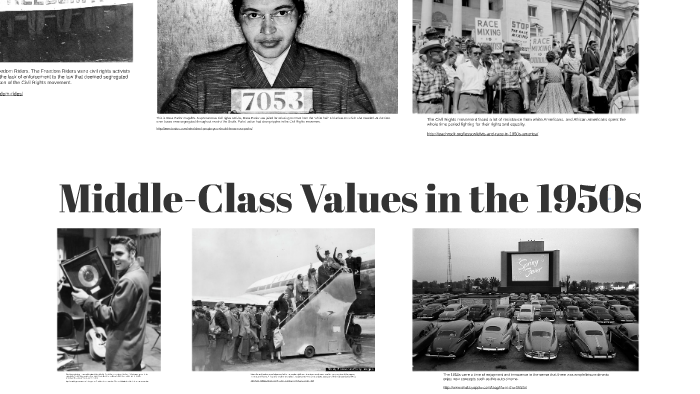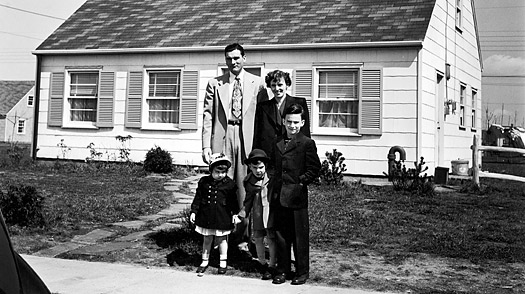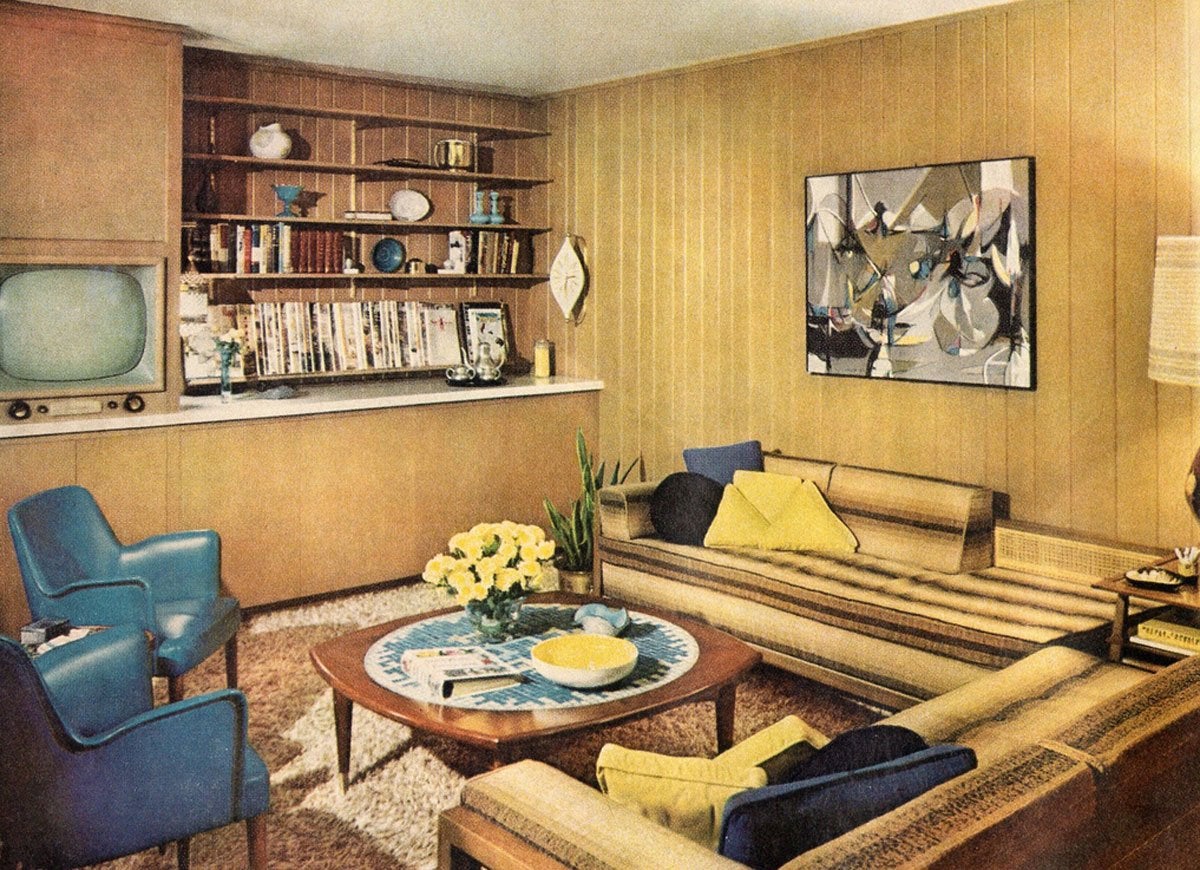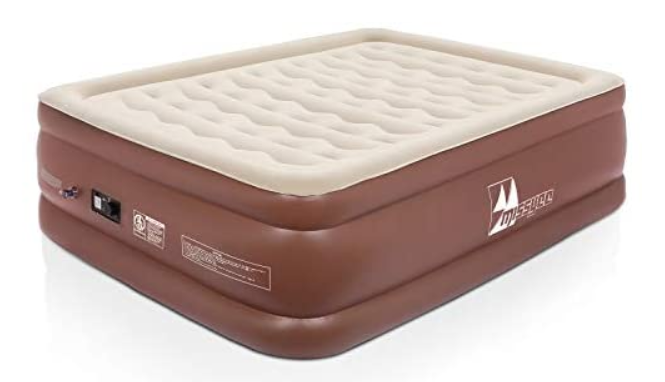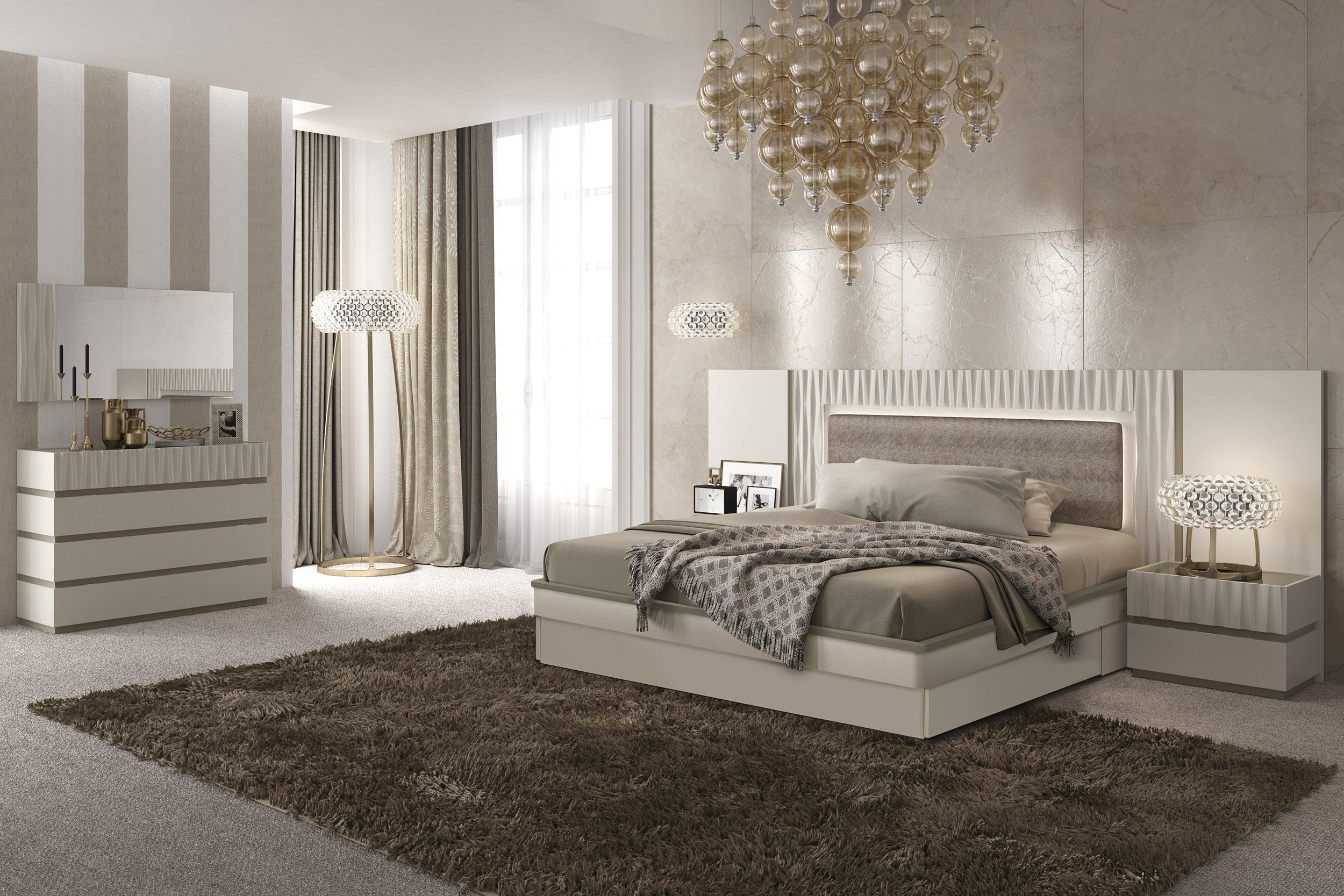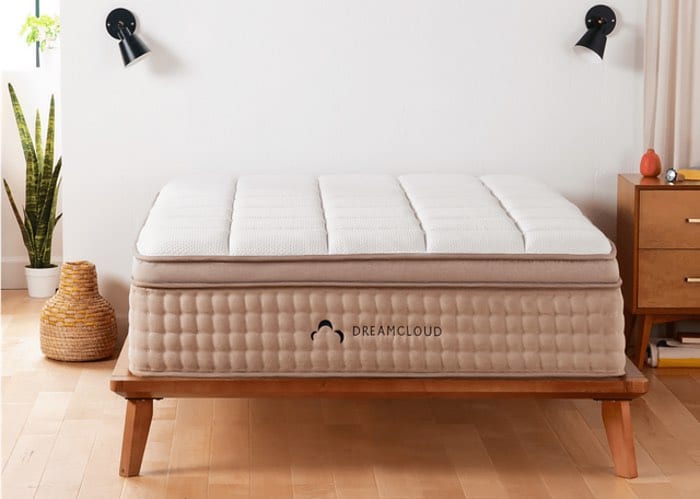The 1950s was a time of growth and prosperity for the middle class in America. With the end of World War II, families were able to settle down and focus on creating a comfortable home. One of the most important rooms in any home during this era was the living room. It was a space for relaxation, entertainment, and showcasing one's status in society. Let's take a closer look at what defined a 1950s middle class living room.1950s Middle Class Living Room
The 1950s was all about embracing modernity and incorporating new design elements into the home. This was reflected in the decor of the living room, which often featured bold, geometric patterns, and vibrant colors. Popular color schemes included shades of turquoise, pink, and yellow, which were often used in combination with white or black. Mid-century modern furniture pieces, such as clean-lined sofas and chairs, were also a staple in 1950s living rooms.1950s Living Room Decor
The 1950s was a time of experimentation and innovation in home interior design. Many homeowners were eager to incorporate new and exciting elements into their living spaces. This often meant embracing new materials, such as plastic and Formica, which were seen as modern and cutting-edge. These materials were used to create furniture, flooring, and even wall coverings.1950s Home Interior
The furniture in a 1950s middle class living room was often a reflection of the homeowner's social status. Those who could afford it would invest in high-end pieces from well-known designers, while others would opt for more affordable mass-produced furniture. One of the most iconic furniture pieces from this era was the Eames lounge chair, which is still sought after by collectors today.1950s Furniture
The 1950s was a time of suburban sprawl, and many middle-class families were moving out of the city and into the suburbs. This shift in lifestyle also brought about a change in home design. The traditional layout of separate and defined rooms was replaced with more open floor plans, where the living room often flowed into the dining room and kitchen. This open concept design allowed for more interaction and communication between family members.1950s Home Design
The home decor in a 1950s middle class living room was often a reflection of the homeowner's interests and hobbies. Popular themed decor included nautical, western, and futuristic motifs. Many homeowners also displayed their collection of decorative knick-knacks and souvenirs from their travels as a way to showcase their experiences and social status.1950s Home Decor
The 1950s was a time when the middle class was expanding and becoming more affluent. As a result, homeowners were able to afford larger homes and more luxurious furnishings. The living room was often the most impressive room in the house, with high-end furniture, elaborate decor, and the latest technology, such as television sets and hi-fi systems.1950s Middle Class Home
If you're looking to recreate the look and feel of a 1950s middle class living room, there are a few key elements to keep in mind. Start with a color scheme of pastels or bold, bright colors, and add in some patterned accents. Invest in some retro furniture pieces, such as a milo baughman sofa or a saarinen coffee table. Don't forget to add in some vintage decor pieces, such as a starburst clock or a lava lamp, to complete the look.1950s Living Room Ideas
The 1950s was a time when the middle class was flourishing, and the living room was a space to showcase their newfound wealth and status. It was a place to entertain guests and show off the latest gadgets and furnishings. The living room was also a space for families to spend quality time together, whether it was watching TV, playing board games, or listening to music.1950s Middle Class Lifestyle
The 1950s was a time of optimism and progress, and this was reflected in home design. The middle class was able to create comfortable and stylish homes, which were a symbol of their success and social status. The living room was the heart of the home, and it was designed to be a space for relaxation, leisure, and socializing. With its bold colors, modern furniture, and open layout, the 1950s middle class living room truly captured the spirit of the era.1950s Middle Class Home Design
The Evolution of Middle-Class Living Rooms in the 1950s
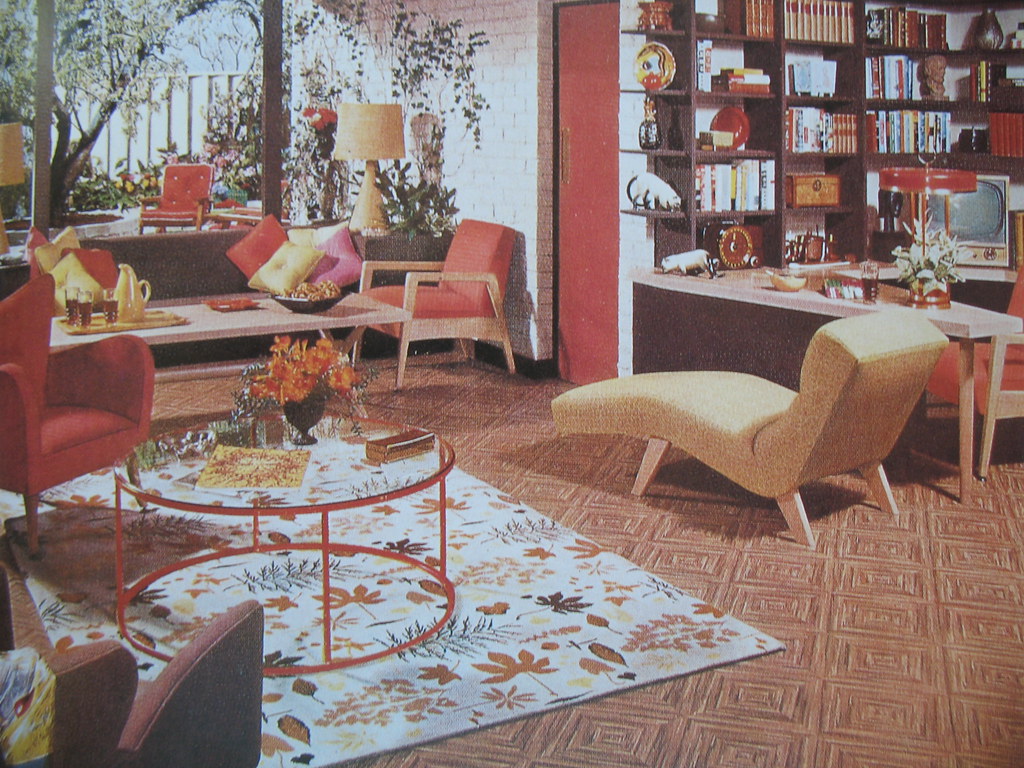
The Influence of Post-War Prosperity
 The 1950s was a time of great economic growth and prosperity in the United States. After World War II, the country experienced a period of stability and affluence, leading to the rise of the middle class. This newfound wealth had a significant impact on the design and architecture of homes, particularly the living room.
The middle-class living room in the 1950s was a symbol of success and status.
It was a space where families could entertain guests and showcase their social standing. As a result, there was a shift towards more luxurious and stylish designs, with a focus on comfort and functionality.
The 1950s was a time of great economic growth and prosperity in the United States. After World War II, the country experienced a period of stability and affluence, leading to the rise of the middle class. This newfound wealth had a significant impact on the design and architecture of homes, particularly the living room.
The middle-class living room in the 1950s was a symbol of success and status.
It was a space where families could entertain guests and showcase their social standing. As a result, there was a shift towards more luxurious and stylish designs, with a focus on comfort and functionality.
The Rise of Modern Design
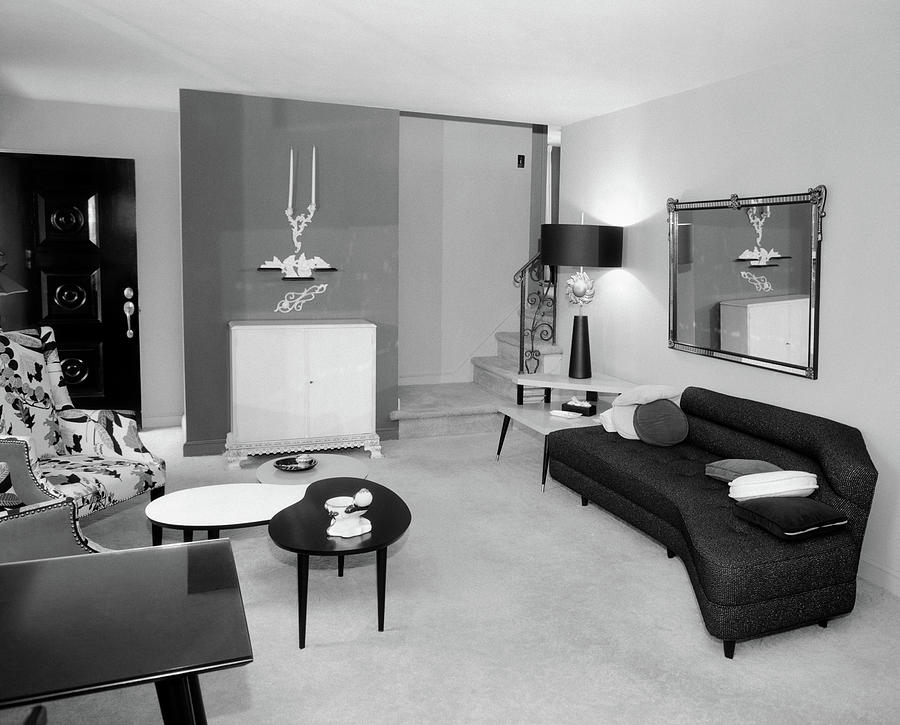 The 1950s marked the beginning of the modern era, and this was reflected in the design of living rooms. Clean lines, geometric shapes, and a minimalist approach were all characteristics of modern design. Furniture became more streamlined and less ornate, with a focus on simplicity and functionality.
The use of bold colors and patterns was also a key feature of 1950s living rooms.
Bright, vibrant hues such as turquoise, pink, and yellow were popular choices for walls and furniture. These colors were often paired with bold patterns, such as stripes and abstract designs, to create a lively and energetic atmosphere.
The 1950s marked the beginning of the modern era, and this was reflected in the design of living rooms. Clean lines, geometric shapes, and a minimalist approach were all characteristics of modern design. Furniture became more streamlined and less ornate, with a focus on simplicity and functionality.
The use of bold colors and patterns was also a key feature of 1950s living rooms.
Bright, vibrant hues such as turquoise, pink, and yellow were popular choices for walls and furniture. These colors were often paired with bold patterns, such as stripes and abstract designs, to create a lively and energetic atmosphere.
The Importance of Entertainment
 The 1950s was also a time when television became a staple in American households. As a result, living rooms were designed to accommodate this form of entertainment. Television sets were often the focal point of the room, with furniture arranged around it for optimal viewing.
Other forms of entertainment, such as record players and board games, also had a place in the middle-class living room.
Built-in cabinets and shelves were common features, providing storage for these items and adding to the overall aesthetic of the room.
The 1950s was also a time when television became a staple in American households. As a result, living rooms were designed to accommodate this form of entertainment. Television sets were often the focal point of the room, with furniture arranged around it for optimal viewing.
Other forms of entertainment, such as record players and board games, also had a place in the middle-class living room.
Built-in cabinets and shelves were common features, providing storage for these items and adding to the overall aesthetic of the room.
The Influence of Suburban Living
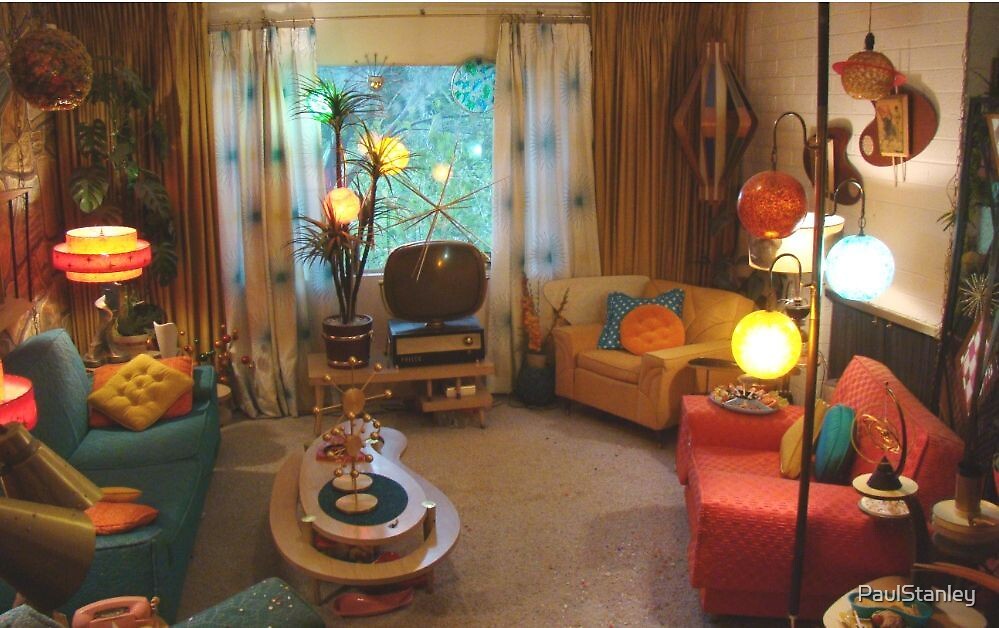 The post-war years also saw a rise in suburban living, with families moving out of the city and into newly developed neighborhoods. These suburban homes were often larger and more spacious than their urban counterparts, allowing for larger living room areas.
The middle-class living room in the 1950s was now able to accommodate more furniture and features, creating a sense of luxury and opulence.
This included items such as coffee tables, bookshelves, and lounge chairs, adding to the overall comfort and functionality of the space.
In conclusion, the 1950s was a decade of prosperity and progress, and this was reflected in the design of middle-class living rooms. With a focus on modernity, entertainment, and suburban living, these spaces became a symbol of success and status, showcasing the wealth and social standing of the families who lived in them.
The post-war years also saw a rise in suburban living, with families moving out of the city and into newly developed neighborhoods. These suburban homes were often larger and more spacious than their urban counterparts, allowing for larger living room areas.
The middle-class living room in the 1950s was now able to accommodate more furniture and features, creating a sense of luxury and opulence.
This included items such as coffee tables, bookshelves, and lounge chairs, adding to the overall comfort and functionality of the space.
In conclusion, the 1950s was a decade of prosperity and progress, and this was reflected in the design of middle-class living rooms. With a focus on modernity, entertainment, and suburban living, these spaces became a symbol of success and status, showcasing the wealth and social standing of the families who lived in them.




